Ptarmigan existed as a project space in Vallila from 2009-2011 and a mobile curatorial/creative platform until 2014. We no longer exist as an organised collective, but this website will continue to serve as an archive of the activities produced as/at Ptarmigan during these years.
We call Ptarmigan a 'project space' and we like recurring events that can build on existing experiences. Many of our events fall under one or more of these projects. We're always open to proposals for new projects as well as new events under existing themes.
Jump To Project
'Guesting' is a series of live events focused on encouraging cross-pollination between creative individuals and collectives. Guesting live art events began in 2013, to date we have had three events in which artists and arts organisers from various backgrounds came together to share experiences of artistic production and to forge new connections. Each live event involved merging together conversation with performance elements.
The word 'guesting' can indicate: 1) appearing as a guest; 2) participating as a guest; 3) entertaining as a guest. In 2014 Ptarmigan will continue the Guesting series.
Kontaining13: Traces takes place in a shipping container in Lasipalatsinaukio, Helsinki, from the 3rd-9th of June 2013. Kontaining is produced by Ptarmigan ry in association with The Arts Promotion Centre Finland.
This year each of the four Ptarmigan directors will be curating a section of the program according to their own artistic practice. Each artist comes from a different discipline and will produce their own artistic work and/or invite other artists from a variety of genres and backgrounds into the space. One day in the programme will be dedicated to a collaboration between the group in the space.
Kontaining is process-oriented, supports experimentation and encourages interactive and site-specific artwork and cross-media exchange. Each day there will be traces left for the next day’s activities taking into consideration the specific site of the container in Kamppi. The programme will include cross-pollination between diverse categories such as installation, performance, sound, music, screenings and participatory activities.
What is it?
A project that began in 2012 exploring cross-cultural food experiences. 'Our Cuisine=Our Stories' in 2012 took the form of a cooking club during which nine women from diverse cultural and occupational backgrounds met weekly in East Helsinki during a two month period. A blog and a DIY publication were developed from the material collected during the meetings.
In 2013 OC=OS has taken the form of workshops and 'Taste Exchange' events. In March 2013 we presented our first Taste Exchange event as part of IRVi (a night of performances at Stoa Cultural Centre as part of the week against racism). During September and October 2013 we will present Taste Exchange events at Helsinki's open air market (Kauppartori), as part of Art Häme festival in Riihimäki and at Ptarmigan space in Tallinn.
Facilitators/ artists
Amal Laala & Sari Kivinen
“Sari is an artist whose projects explore a relationship between storytelling, performance and identity. Amal is a socially engaged artist who works with various groups and communities to instigate and engage in discussion, experimentation and play. Both are working with the artist association Ptarmigan ry, which is a mobile curatorial project based platform.”

THE CITY GHETTOS OF TODAY SUMMATION 2013-2015
Short description of the project
At the heart of the project lies a desire to redefine and re-examine the concept of ghetto in the context of today’s closed migrant districts. Through artistic creation and the sociologic research we aim to create a space where the story of Europe’s migrant ghettos can be examined and discussed. How do we talk about “ghettos” today and is it possible to redefine the word itself? What role does the existence of the ghetto have in constructing the European identity? What are the reasons for the phenomenon of the ghetto in contemporary Europe? Is it a co-operation with traditional society or simply a part of the anonymous city lifestyle? What characteristics define these migrant districts throughout Europe today and how do they connect to the collective memory of Europe’s past? The project consists of a series of workshops open to the local communities in different European cities – Warsaw, Paris, Bologna, Milan, Helsinki and Berlin. Each workshop, run by artists and cultural operators, will be concluded with an art installation and debate on the themes of the project. The final event of the whole project – an art installation and debate that will collect the materials from all the European workshops will take place in Warsaw in January 2015. The project will involve artists, cultural operators as well as academics and social workers who will explore the theme of districts with large concentrations of migrants (the districts where they live, work, or study) in the European cities. The interdisciplinary feature of the Strefa WolnoSłowa foundation is reflected in the character of the project which combines academic and theoretical approaches to the problem with the artistic and cultural creation. Through artistic and academic research the project aims to explore the theme of migrant ghettos of today, reflecting on the various definitions and visions of ghettos within the contexts of Warsaw, Paris, Bologna, Milan, Helsinki, Berlin and Antwerp.
THE CITY GHETTOS OF TODAY comprised of 9 events
1. The project kick-off event took place in Bologna, Italy, from October 9th to 13th, 2013.
Participation: The event involved 71 citizens, including 5 participants from the city of Warsaw, Poland, 5 participants from the city of Milan, Italy, 2 participants from Berlin, Germany, 4 participants from the city of Paris, France, 4 from the city of Helsinki, Finland, 1 participant from Zurich, Switzerland, 50 participants from Bologna, Italy (between them Italians, migrants and refugees originally from Afganistan, Eritrea, Ivory Coast, Iran, China, Iraq, Russia, Pakistan, Camerun, Palestine, Marocco, Congo)
Short description: The participants of the meeting discussed different points of view on the phenomenon of ghetto in their local context and created a detailed timetable of work for the coming months as well as discussed the articles – the results of the research part, their construction and content. The meeting in Bologna consisted of the discussions between the rappresentatives of the partner organizations on the project planning and methodology and of the activities open to the local communities - a debate on the theme of the contemporary ghettos in Europe, key-note lecture of Franco La Cecla, creative music, theater and video workshops and of the interactive installation presenting the first work in progress workshop results.
2. First city in the range of seven cities visited by The City Ghettos of Today project, Paris, France from March 9th to 23rd, 2014
Participation: The event involved 120 citizens, including 7 participants from Warsaw, Poland, 3 participants from Milan, Italy, 3 participants from Berlin, Germany, 6 from Bologna, Italy, 4 from Helsinki, Finland, 1 participant from Cyprus, 96 participants from Paris, France (between them French, migrants and refugees originally from Mali, Algeria, Moldova, Colombia, Chile).
Short description: The aim of the event was to open a debate comparing the situation of the city ghettos inside Paris and in the peripheral areas of the city. The different art methods aimed in describing the phenomena of city ghetto and in showing it deep social, culture and philosophical consequences. Participants saw how to process real human stories and sociological research in art. The final event of the workshop, open to the public, brought the problem of city ghetto to local community, media and authorities. From 9 to 23 March, The City Ghettos of Today’s international artistic team was in residence at Paris’s Musée de l’histoire de l’immigration (Museum of Immigration History) in order to create and present the first phase of the ambulatory performance-installation. This inaugural event explored the phenomenon of ghettoization in two neighbourhoods located in France’s Ile-de-France region: the Goutte d’Or in Paris and the Quartier du Parc in Nanterre. Coordinated by the Paris-based company Check Points, this double exploration showcased the collaborative work of locally based artistic researchers who were brought together prior to the European team’s artistic residency with the help of cie Check Point’s local partners (between them Université Paris 8, the association Atouts cours, Les Equipes de Développement Locale based in both the 18th arrondissement and in Nanterre). During the collective outing of the project meeting in Paris on 22nd of March, participants had the opportunity to view the in-progress installation, attend the performance, participate in a roundtable discussion and enjoy a convivial meal together with the artistic team.
3. Warsaw, Poland form May 6th to 17th, 2014
Participation: The event involved 93 citizens, including 5 participants from Helsinki, Finland, 3 participants from Berlin, Germany, 3 participants from Paris, France, 4 participants from Bologna, Italy, 2 participants from Milan, Italy, 1 participant from Palestine, 75 participants from Warsaw, Poland (between them Poles, migrants and refugees originally from Ukraine, Bielorus, Russia, Colombia, Marocco, Chechenia, Vietnam, China)
Short description: The City Chettos of Today in a Polish environment, used artistic exploration as a means of exploring the multiple meanings that the term “ghetto” evokes in the context of contemporary Warsaw. Over the course of the event, participants and members of the public had the opportunity to take part in the numerous theatre, music, sound design and video workshops that make up the programme. Led by members of the project team in collaboration with the State Ethnographical Museum in Warsaw as well as with the Refugee Centre in the Targowek district, this dimension of the project placed the voices of refugees and migrants at the heart of this process of artistic discovery. By conducting interviews and artistic workshops in groups, ‘Miranda gazes upon the sea’ created a space in which to reflect upon the presence of immigrant minorities in Warsaw: do these immigrant populations form inaccessible enclaves? Or, on the contrary, do they form relationships with Polish nationals easily? This project also considered how Polish populations see foreigners and examined their reactions to the presence of migrant communities in Warsaw. As such, events taking place during the first stage of this residency equally provided a space in which both Ukranian and Vietnamese, immigrants, minorities and refugees populations living in Warsaw were able to add their voices to this debate, namely, through participatory artistic workshops. Additionally, artists from the artistic team and workshop participants of the project met a journalist and activist, Jan Gebert. The meeting enriched the project research by addressing topics concerning the Jewish community living in modern and pre-war Warsaw. Combining theatre, visual arts and music, the workshop’s crowning moment was an interactive installation entitled ‘Miranda gazes upon the sea’, which took place on 17 May at the State Ethnographical Museum as part of The Night of Museums.
4. Bologna, Italy from June 24th to July 6th.
Participation: The event involved 78 citizens, including 5 participants from Warsaw, Poland, 3 participants from Milan, 3 participants from Paris, France, 2 participants from Berlin, Germany, 2 participants from Helsinki, 3 participants from Antwerp, Belgium 60 participants from Bologna (between them Italians, migrants and refugees originally from Afganistan, Eritrea, Ivory Coast, Iran, China, Iraq, Russia, Pakistan, Cameroon, Palestine, Marrocco, Congo)
Short description: The aim of the event was to focus on various forms of camps for migrants and political refugees located in Italy, Europe and Africa as contemporary ghettos. Project interviews focused on an Afghan camp in Patras, a refugee camp on the borders of Sierra Leone, a center for identification and expulsion (C.I.E.) in Bologna, and on a prison in Libya. The methodological hypothesis was to listen to those who had lived in such contexts, and through the reflection and analysis of anthropologists, sociologists, political geographers in dialogue with artists, to deconstruct those structures into constituent elements, with particular attention to categories "similar" to those of narratology (eg characters that act, typical dynamics, types of conflicts, structures of life experiences, objects). During the second week, participants and organisers used the key words emerged in such categories as stimulations for art workshops involving nearly 100 participants and embraced practices of writing, video, theater, illustration, and music. The final performance, which involved around fifty participants-actors from fourteen different countries, was titled ‘An Island is Full of Noises’, which is a verse from Shakespeare’s ‘The Tempest’. Viewed through this Shakespearean lens, the "camp" signaled a form of isolation whilst simultaneously emphasizing a richness of possible voices and interpretive keys. The performance took place in the prestigious setting of the Cortile del Pozzo (Courtyard of the Well), the courtyard of the town hall of Bologna.
5. Helsinki, Finland from September 8th to 20th. 2014.
Participation: The event involved 73 citizens, including 5 participants from Warsaw, Poland, 3 participants from Bologna, 1 participant from Milan, 2 participants from Berlin, 2 participants from Paris, France, 1 participant from Antwerp, Belgium, 59 participants from Helsinki (between them Finnish, migrants and refugees originally from Somalia, Iraq, Mexico, Peru, Cameroon, Chechenia, Senegal)
Short description: The Helsinki-situated project part of the international The City Ghettos of Today invited organizations and individual citizens to construct together meaningful experiences and artistic expressions related to the concept of ghettos. In Helsinki, the limits between groups of people are not physical, nor as notably spatial as in some other cities. Approach to the theme in Helsinki focused on knowledge, practices and skills that become isolated, when people move to Finland from other countries. The ghettoization is a process of searching for a group among which it is possible to share the wisdom and values that are not recognized elsewhere in the society. These invisible ‘ghettos’ are thus also sources of unknown skills and hidden knowledge. After Paris, Warsaw and Bologna it was Helsinki´s turn to received the installation that was travelling from one city to another, transforming its contents in each city. From 8th to 20th September, the international artistic team of The City Ghettos of Today led a process of workshops to reconstruct the installation inspired by encounters that offer different views to the local context of migration. During the process, locally created audiovisual contents were replaced the contents coming from the peer cities of the project. More than a ready work of art, the installation was a travelling tool for exploring the theme during the collective period of creation. The installation was constructed in the Cultural Centre Stoa in Itäkeskus and performances related to it took place in shopping centre Forum in the centre of the city. The process started with encounters with individuals belonging to different groups of migrants. Based on these interviews and the pre-work of the local team, audiovisual content was created in the workshops and located in the installation structure formed by different sized tubes. The tube structure also served as a scenography for the performances that had been created related to the installation. Seminar and public debate took place on September 16th 14- 18 at Lavaklubi, the stage club of the National Theatre. It was entitled ‘Global Pasts, Local Presents’ and presented case studies of The City Ghettos of Today project in the different European cities involved in the project: Paris, Warsaw, Bologna, Helsinki, Milan and Berlin. Researchers and artists from these cities described their local approach to addressing the concept of ghettos, the communities and partners with whom they have worked and the preparatory work in view of the project’s installation in their city. Cities that have already realized their installation illustrated with video samples how the preparatory process contributed to the installations and performances.
6. Milan, Italy from October 9th to 19th, 2014.
Participation: The event involved 84 citizens, including 3 participants from Warsaw, Poland, 7 participants from Bologna, Italy, 2 participant from Berlin, Germany, 2 participants from Helsinki, Finland, 3 participants from Paris, 2 participants from Anwerp, Belgium, 65 participants from Milan (between them Italians, migrants and refugees originally from Senegal, Marocco, China, Somalia)
Short description: The Milan stage of the project involved a collaboration with the Teatro degli Incontri (TdI), a group comprising twenty citizen-actors, including women, men, young, migrants. Working with the international artistic team, the TdI group brought their individual contributions related to the theme of contemporary ghettos to fruition in a final installation and performance; the sum of a year's journey. These individual contributions were rooted in on-the-ground investigations into low-income housing suburbs of Milan which took the form of a collection of interviews and audio- video impressions. The result was the production of the performance ‘Chiusi Dentro’ (‘Locked Inside’). ‘Chiusi Dentro’ was performed during the Milan residency in the courtyard of a council building on the outskirts of Milan and was filmed by The City Ghettos of Today international artistic team. The TdI group also collaborated with City Ghettos network to produce original writings, fragments of plays and songs. Continuing the project’s exploration of Shakespeare’s ‘The Tempest’, the Milan residency broached the subject of contemporary ghettos by focusing on the figure of Caliban: the charming stranger requiring education and taming. Explorations took place at the Paolo Pini in Milan.
7. Berlin,Germany from November 11th to 13th, 2014.
Participation: The event involved 67 citizens, including 6 participants from Warsaw, Poland, 2 participants from Helsinki, Finland, 2 participants from Paris, France, 4 participants from Bologna, 1 participant from Milan, 1 participant from Anwerp, Belgium, 51 participants from Berlin (between them Germans, migrants and refugees originally from Poland, Iraq, South Corea, Chile, France, Greece, US, Turkey, Netherlands)
Short description: The workshop opened a dialogue between participants on living in city ghetto and isolation of migrants and their status in Berlin. The different art methods describde phenomena of city ghetto and showed its deep social, culture and philosophical consequences. Participants saw how to process real human stories and sociological research in art. The final event of the workshop, open to the public, brought the problem of city ghetto to local community, media and authorities. The focus was placed on the urban and social changes which are currently affecting the city, such as gentrification and the resulting displacement of low-income inhabitants, often including those with a ‘migration background’. Former immigrant and poor districts often associated with the idea of ‘ghetto’, like Kreuzberg or Neukölln, have received unprecedented hype and developed into magnets for tourists and real estate investors during the last five years. Over the course of this, these districts, once the furthest limits of West Berlin and now central districts in the reunified German capital, have been increasingly populated by a new wave of immigrants. These newcomers, primarily from comparatively rich Western countries, active in the creative industries and often using English, not German, as a working language stand in stark contrast both to the pre-war German residents of Kreuzberg and Neukölln as well as the first wave of post-war immigrants, coming primarily from Turkey. The local partners OnElf Theater and Performance Collective and the English Theatre Berlin International Performing Arts Center together with the international artistic team of The City Ghettos of Today invited, through an open call, an heterogeneous group of participants based in Berlin, ‘old’ and ‘new’ Berliners, from Germany and from beyond, to work and reflect on the changing living and social conditions in the city. Starting from the stories and biography of the participants as a representative ‘sample’ of contemporary Berliners and in a provocative relation with one another, a collective, controversial and lively portrait of the city was created.
8. Warsaw, Poland from January 15th to 24th, 2015.
Participation: The event involved 87 citizens, including 3 participants from Helsinki, Finland, 5 participants from Paris, France, 2 participants from Berlin, Germany, 11 participants from Bologna, Italy, 10 participant from Milan, Italy, 1 participant from Antwerp, Belgium, 55 participants from Warsaw Poland (between them Poles, migrants and refugees originally from Ukraine, Bielorus,Russia, Colombia. Marrocco, Chechenya, China, Senegal)
Short description: The January residency of The City Ghettos of Today project in Warsaw provided a synthetic overview of the project’s residencies over the past year in Paris, Warsaw, Helsinki, Milan, Berlin and Bologna. During the event, Warsaw’s State Ethnographic Museum welcomed artists, local researchers, coordinators as well as participants from all cities, all of whom took part in the project at some point during its year-long run. Over the course of this ten-day event, both foreign guests and Warsaw-based members of the public had the opportunity to take part in a number of practical workshops at the State Ethnographical Museum of Warsaw in the fields of music, theatre, sound and video. Participants were equally invited to take part in transforming existing audiovisual and textual material connected with migrants and refugees emanating from previous workshops in cities across Europe. Using artistic activities as a focal point, these workshops addressed the multiform ways in which migration has shaped Europe over the years as well as the different ways in which EU citizens have reacted to the presence of newcomers from Asia, Africa, Middle East and East. In this vein, The City Ghettos of Today used the language of art and of the theatre to explore different facets of immigration in Europe, ranging from personal testimonies to legal and administrative issues. Inspired by testimonies culled from cities across Europe over the course of 2014, Europe Island showcased personal histories, songs and short videos of migrants from Congo, Eritrea, Sierra Leone, Somalia, Vietnam, Palestine. This showcase took the form of an interactive installation that was held at Warsaw’s State Ethnographical Museum on 21 January 2015.
9. Paris, France from February 9th to 13th, 2015.
Participation: The event involved 63 citizens, including 3 participants from Helsinki, Finland, 4 participants from Warsaw, Poland, 4 participants from Bologna, 3 participant from Milan, 2 participants from Berlin, Germany, 4 participant from Anwerp, Belgium, 43 participants from Paris, France (between them French, migrants and refugees originally from Mali, Algeria, Moldova, Colombia, Chile)
Short description: The conclusive and evaluation event of The City Ghettos of Today project in Paris provided a synthetic overview of the project’s residencies over the past year in Paris, Warsaw, Helsinki, Milan, Berlin, Bologna and Antwerp. During the event, Immigration History Museum welcomed artists, local researchers, and coordinators from all cities, all of whom took part in the project at some point during its year-long run. Over the course of this three-day event, both foreign guests and Paris-based members of the public had the opportunity to take part in an open discussion at the Immigration History Museum in Paris about the project artistic and research outcomes. Public was invited to see the audiovisual materials connected with migrants and refugees issues emanating from the creative workshops in cities across Europe. Using artistic activities as a focal point project addressed the multiform ways in which migration has shaped Europe over the years as well as the different ways in which EU citizens have reacted to the presence of newcomers from Asia, Africa, Middle East and East. In this vein, The City Ghettos of Today used the language of art and of the theatre to explore different facets of immigration in Europe, ranging from personal testimonies to legal and administrative issues. Inspired by testimonies culled from cities across Europe over the course of 2014, Island Europe showcased personal histories, songs and short videos of migrants from Congo, Eritrea, Sierra Leone, Somalia, Vietnam, Palestine. This showcase took the form of a presentation and an open discussion that was held at Immigration History Museum on 11 January 2015.
10. EXTRA EVENT. Antwerpen, Belgium from January 27th to February 8th 2015.
Participation: 87 citizens.
Short Description: Partners in Antwerpen: KunstZ with partners MAS – Museum ann de Stroom, Matterhorn, Demos, Atlas, University of Antwerp.The City Ghetto's of Today will look at various European cities to the contemporary interpretation of the concept of 'ghetto'.
The City Ghetto's of Today is an artistic and sociological research.
An international project team creates together with the participants from different communities a place to look for stories, interpretations and issues on migration and diversity.The project visited Bologna, Paris, Warsaw, Helsinki, Milan and Berlin.
Under Sail performance is the Antwerp edition of The City Ghettos of Today. On the eighth floor of the MAS, overlooking the city and harbor, the students of the kunstZacademie show the result of the workshops.
This project has been funded with support from the European Commission. This publication reflects the views only of the author, and the Commission can not be held responsible for the information contained therein. Project co-funded by the European Commission - Europe for Citizens Programme and with the support of the Evens Foundation
Ptarmigan has been proud to operate a residency programme since our inception. These residencies have ranged from two-month projects (supported by Kulturkontakt Nord) to shorter, grassroots/self-funded projects. Below are some of the artists, curators, and producers who we have hosted over the years.
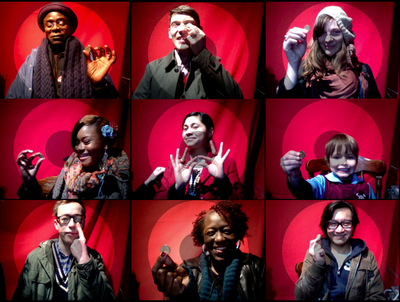
In August 2012 Ptarmigan is inviting UK-based artist Brian Lobel to develop the performance Carpe Minuta Prima and a related workshop in Helsinki. Lobel’s visit is connected to the Due Diligence Development Circuit (DDDC), which Ptarmigan in Helsinki is a member of. Our focus theme is alternate economies and self-organisation. Lobel’s performative installation ‘seizes the moment’ by buying minutes of time from participants, records these minutes and re-packages them into one-off DVDs. CMP intervenes in and transforms public space by asking people to reflect on issues of economy and the value of our time.
Brian Lobel has previously performed in Finland at ANTI Festival of Contemporary Art in Kuopio, showing his work PURGE which was witnessed in person and online by over 5000 people. Lobel is a New York-born, London-based performer who creates playful and provocative installations and stage shows about the body, illness, community and interactivity. His original work has been shown at the V&A Museum, British Film Institute, Tate Modern, Duckie, Sadler’s Wells, Brixton Market and Barbican (London), Edinburgh Festival, Brighton Festival, and in over 80 cities internationally. He has received commissions and grants from Wellcome Trust, Arts Council England, Motiroti, Jerwood Charitable Foundation and Lower Manhattan Cultural Council. A book of his plays (BALL & Other Funny Stories About Cancer) was published in 2012 by Oberon Books, as was a DVD of his collected work, published by the Live Art Development Agency, London.




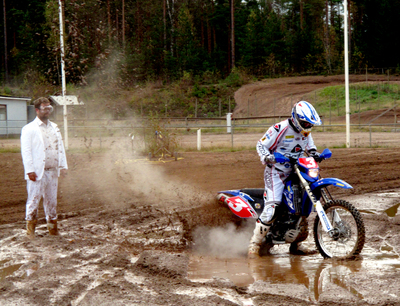
Johannes Blomqvist was born 1985 in Tibro, Sweden but has now his base in Norrbotten (the most northern county in Sweden). Johannes mainly works with performance art, but sometimes also with theatre, dance and installations. He has participated at many festivals, galleries and other events in many countries, such as Norway, England, Spain, Portugal the UK, Germany and Brazil. In Norrbotten his touring performance Personal Shopping has been a big success, and he has been organizing the performance Art Festival “LEIF” in Luleå. He has recently started a new platform for performance art called PAIN (Performance Art In Norrbotten), which organizes performance events, Artists Residencies and workshops in Norrbotten. Alongside, Johannes has worked as a companion for visually impared people and got an interest for perception and the complexity of our senses. During his residency at Ptarmigan in Helsinki, Johannes will develop and deepen his artistic research in these themes by making performances and other happenings together with visually impared people in the city.
"I love performance art. It is for real. Real emotions, real people. I also love working with real stuff - in nature and use organic, natural material such as dirt, water and food. I love the sublime, the dressed, the grand, the festive. I love combining this with the natural. For me the site, space and context always is the starting-point for my work. And while doing it being present and trying get my audience to be that too. I want to give my audience a experience and that it include use of more than just one sense. I want to really meet them. Be in the meeting. For real. I also try to warp the reality a bit and what I show doesn´t have to make sense."


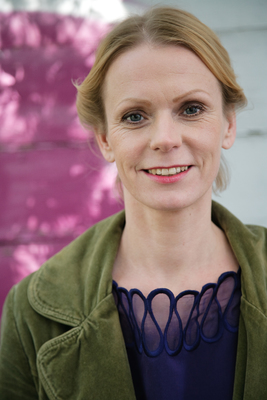
Kristīne Želve is a filmmaker, writer and curator of cultural events. She has BA in film and TV directing and Master of Arts in culture management. She has directed creative documentaries , TV productions and music videos, produced film and theatre festivals and urban art projects in Riga. Since 2005 she is a presenter of the daily culture program on Latvian State TV. In 2011 her first book of short stories The Girl Who Cut My Hair was published.
Since 2009 Kristīne is working on researching Latvian - Finnish melodrama master, filmmaker Teuvo Tulio (1912 – 2000). She is making the creative documentary Fedya about his childhood in Latvia and currently developing the international multimedia project Teuvo Tulio – In Between the Worlds which includes exhibition, film screenings and discussion panels to celebrate Tulio’s 100 years anniversary.
During her Ptarmigan residency, Kristīne will conduct further research into Teuvo Tulio's life and work on her film with some public talks and screenings.


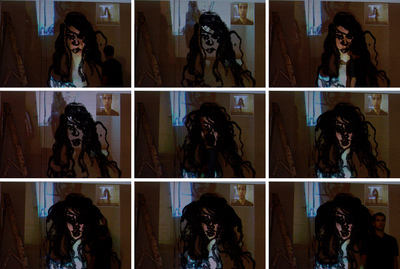
Sasa Rajsic (1985, Yugoslavia) is a visual artists working in performance, video, installation, sculpture and painting. Rajsic is currently enrolled in Master of Arts Degree Programme in Live Art and Performance Studies at Theatre Academy Helsinki.
History is an important aspect of all of my work. I use historical references, not to literally interpret but to analytically approach and distinguish paradox within them. My work is conceptually based and tend to be as exploratory and critical of itself as I am of the ideas that are being communicated.

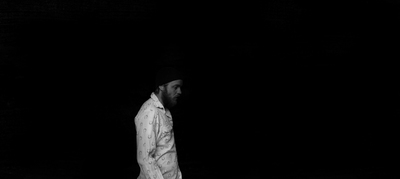
Ola Ståhl is a writer, cultural theorist and sound & text based artist based in Malmö, Sweden. He received his BA with First Class Honours in The History of Art, Design and Film with Professional Writing from Sheffield Hallam University, and his MA with Distinction in The Social History of Art and PhD in Cultural Studies from the Department of Fine Art, Art History and Cultural Studies at The University of Leeds. He is a founding member of artist collective C.CRED with which he has participated in several international art exhibitions and festivals including BIG Torino 2002: BIG Social Game (Turin, Italy), ISEA 2004 (Tallinn, Estonia), Version>05(Chicago, USA), and Urban Festival 2005 (Zagreb, Croatia). His work has also been shown in exhibitions and at venues such as Public Space With A Roof (Amsterdam, Holland, 2004), South Hill Parks Arts Centre (Bracknell, UK, 2007), Kunsthaus Erfurt (Erfurt, Germany, 2007), Esbjergs Kunstmuseum (Esbjerg, Denmark, 2008), Ormeau Baths (Belfast, Northern Ireland), and NEON Gallery (Brösarp, 2009).
In 2003-2004 he collaborated with NYC based artist collective the 16Beaver group on a series of projects and in 2006-2007 he worked with Philadelphia-based artist group Basekamp on, amongst other things, a contribution to the Locally Localized Gravity exhibition at the ICA, Philadelphia (USA). As an occasional cohort of the artist group Red76, he’s been working on projects both at Reed College, Portland, Oregon (USA) and at The Bureau for Open Culture, Columbus, Ohio (USA).
His writing has been published in several journals including Parallax, Angelaki, Journal of Visual Cultures, ArtQuest, Unrealized Projects and Pequod, as well as in a forthcoming volume edited by Simon O’Sullivan and Stephen Zepfke under the title Deleuze and Contemporary Art (Edinburgh University Press), and between 2001-2003 he was part of the editorial collective of Parallax, an international journal of cultural studies. Additionally, he has contributed papers, readings and performances to many international festivals and conferences including the annual conference of the International Association for Philosophy and Literature on the theme Writing Aesthetics (Leeds, 2003), the CentreCATH conference The Ethics and Politics of Indexicality and Virtuality (Bradford, 2005), The Living Thought of Gilles Deleuze at Copenhagen Business School and The Royal Danish Academy of Fine Art (Copenhagen, 2005), and the Beckett & Company centenary conference at The Tate Modern and Goldsmiths College (London, 2006), and between 2003-2008 he taught at Central Saint Martins College of Art and Design and London College of Communication, University of the Arts London.In 2010 he was selected to participate in the prestigious residency program at The Headlands Centre for the Arts in California, USA.
Ola Ståhl is currently working out of shared studio and project space Ystadvägen 13 in Malmö where he is also part of the editorial collectives of the journal FASAD and the independent press In Edit Mode. During his Ptarmigan residency he will work on his project FILM.





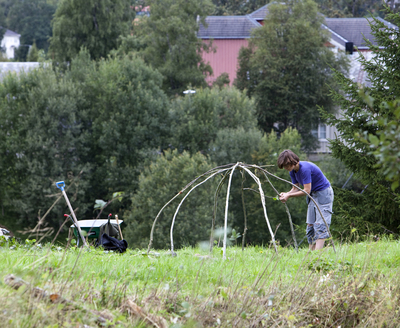
Vigdis Haugtrø investigates how to redraw the spectator from here or their primary position of looking at art; to participate in art. Through this experience of physical activity the spectator can reach different levels of stored memory captured by the body instead of the mind. Through these often playful activities associations are set in motion and generate new energy.
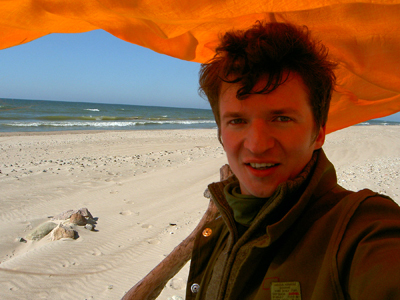
Artūrs Punte is our artist in residence from 15th September - 15th November 2010.
Artūrs Punte was born in Riga in 1977. He graduated from the Maxim Gorky Literature Institute, in Moscow, and currently works in advertising. Punte’s conceptual projects include “Bubbleshow” (www.bubbleshow.com, with Dmitrijs Zagga) and “Как хочешь!” (www.re-lab.net/KX, with Vladimirs Svetlovs); he is also the author of several poetic video projects and was an organizer of the poetic video festival “Word in Motion” in 2001 and 2003. Punte edits the journal “Орбита” and the Web site www.orbita.lv, and compiled the collection “Dengi/Науда” in 2001. He writes poetry in Russian and Latvian and translates poetry from the Latvian.
Punte has published works in the journals “Орбита”, “Даугава”, “Karogs”, “Luna”, “Латвийская литература”, and “Ariel” (Sweden); the collections “Dengi/Науда”, “Dzejas diena”, “Спутник” (Kemerovo, 2001), “Вавилон” (Moscow), “Nell`orbita di Riga” (Italy, 2006), and “Ars poetica” (Bratislava, 2005); and the anthologies “Братская колебель” (Moscow, 2004), “Девять измерений” (Moscow, 2004), “Освобожденный Улисс” (Moscow, 2004), and “Воздушный змей” (Tartu, 2006). Punte’s works have also been published on the Web sites www.satori.lv, www.orbita.lv, and www.textonly.ru.
During his stay, Punte will be creating a sound performance, workshop and screenings. His project whilst at Ptarmigan is a sound performance - “Poetry Map of the Town”. He will be making field recordings in the urban areas of Helsinki – on the streets, in the shops, cafés and other public places.
An essential aspect of the performance will be the usage of hisself-made musical “instrument” that is a special freaky-looking gadget for live sound mix. The “instrument” is made from Yamaha sound mixer connected to four mp3-players and a microphone; the appearance altogether reminds of a retro-futuristic guitar.
The main idea of the project is filling the map of Helsinki and it’s suburbs with visual, audio, textual and poetry tags. He aims to do it with every place he visits – thus step by step (line by line – in case of poetry) building his own big virtual map of the imaginary city. Punte will choose specific sites within the place to get familiar with, and reinterpret them by the means of poetic texts. Text may be expressed in various forms, such as short poems, letters, SMS and diary or tags and notes on the internet map (GPS based). As the project outcome, the virtual map will provide an experiential tour of the multiple layers of physical, social, historical and fictional qualities that have been identified through the research of cities.
Regarding the project, Punte writes " The lines of my poetry often have concrete geographic connections, including coordinates in the spatial means. On one hand, these ‘coordinates’ lead to a very particular point, like a building or a certain café; on the other hand, maps themselves are very intense and visually rich material, which invites us to ‘read’ them more and more closely, do reveal them layer by layer, and to follow them. Thus, the most appropriate poetry reading could be a common journey of a poet and a reader/listener, using the specially prepared sound-scape or: map. Reader and the author, together look for a route on this map, zooming certain objects closer, illustrating the exact phrases with the sound, recorded there; mixing several sound tracks, using effect to create the most impressive sound picture for the poem. The destination and time for this travel is chosen intuitively; this performance altogether is very improvisational and processual."
This residency has been made possible due to funding from the Nordic Culture point.



Amanda Vähämäki was born in 1981 in Tampere, Finland. After high school she moved to Italy to study painting in the Fine Arts Academy of Bologna. Very soon she discovered the vivid comic scene of Bologna. She also understood painting was not her cup of tea. In 2004 she began self-publishing her comics and became a member of Canicola, a comic art collective of young artists in the Bologna area. She has also published short stories in various European anthologies, such as Canicola, Orang and Glömp. Her first graphic novel, Campo di Babà, was published by Canicola in 2006. It was then translated into French, Swedish, Finnish and also Serbian. In 2006 Vähämäki and her colleague Michelangelo Setola held an exhibition collecting over 200 drawings in Hamburg. Some of these drawings were self-published in a little book called Souvlaki Circus, re-edited and reprinted in 2008 by Buenaventurapress.
After graduating, she moved back to Finland. Vähämäki was asked to draw a story for the Drawn & Quarterly Showcase number 5. Once it finally was ready in 2008, it was published also in Finnish in a separate edition by Huuda Huuda, under the name Äitienpäivä, (Mother's Day). Now it exists also in French, published by Fremok. Vähämäki currently resides in Helsinki and works as a full-time comic artist with eleven other artists at the only comic art studio of Finland, Kutikuti. Together they publish a free comic tabloid magazine called Kuti.

Ptarmigan has hosted a variety of projects, some regular and some irregular. Here are former recurring projects that are currently inactive (but may come back to life).
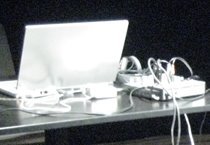
Aalto University Laptop Orchestra aims to bring together all kinds of interests for sharing experimental/electronic music experience in live performances. AULO is an open group for experimenting collaborative laptop music both in academic and free context.
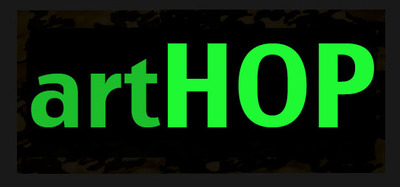
artHOP is a socially engaged participatory hopping betweens places. Some places will already be artistically charged (e.g. the gallery), whilst other places will challenge us to think about them in artistic ways (e.g. a dog show or industrial site). artHOP is a leisurely (yet active) Saturday afternoon hopping group and will meet every couple of weeks (please check this site for updates of dates and locations). 3-4 places will be visited each time. Welcome along!
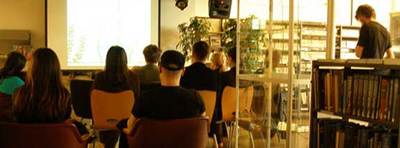
Clip Kino' events are self-organised screening events of short video clips & documentaries found online. It aims to drag aspects of normalised 'private' activity - of viewing downloaded content on one's own computer - into public space for screening, appreciation and debate. 'Media-environmental awareness' applies to include the social ecology of one's interests, desires, and attentions in one's peer-group and community.
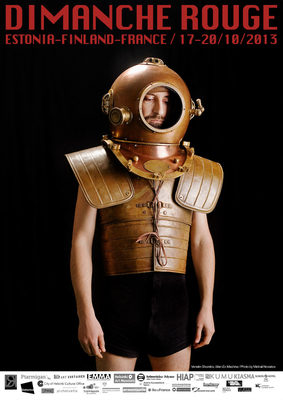
Ptarmigan ry is co-producing part of the Helsinki leg of the Dimanche Rouge Estonia-Finland-France festival from October 17th till the 20th, 2013.
The festival takes place in Tallinn, Helsinki/ Espoo, and Paris and is organized by Paris based Dimanche Rouge in partnership with associations Ptarmigan ry, Art Container/Culture Factory Polymer and Le Generateur/Frasq. The program will feature experimental performances in disciplines including performance art, audiovisual, multimedia, dance and sound art.
In addition to the performances, participating artists will hold roundtable discussions and talks throughout the festival.The festival will be held at a range of venues including national museums, artist-run spaces and various site-specific locations.
Ptarmigan co-directors Sari Kivinen and Christine Langinauer have curated part of the Helsinki program which is focused on site specificity, urban explorations and interventions in public spaces.
Dimanche Rouge is a Paris-based, non-profit association dedicated to the promotion of experimental and live art. Check out their website http://dimancherouge.org/ for more details including a spunky online catalogue featuring all of the artists involved in the festival!
ARTISTS
Ali Al-Fatlawi and Wathiq Al-Ameri, Amelia Beavis-Harrison, Andrea Saemann, Andres Montes, Andrus Joonas, Arianne Foks, Belinda Campbell, Corporal Outis, David Commander, Eniko Buday and András J.Nagy, Erik Alalooga, Erki Kasemets, Ernest Truely, Francesca Fini, Gisela Hochuli, Hector Canonge, IP Group, Jamie McMurry, Janet Meaney, Jasmin Schaitl, Jean-Christophe Petit, Jeffery Byrd, Judith Huber, Jussi Matilainen, Kaia Otstak, Karolin Kent and Sarah Armstrong, Katrinamuri, Kimbal Quist Bumstead, Krachkisten, Lora Dimova, Meri Nikula, Monica Klingler, Nastja Säde Rönkkö, Nathalie Mba Bikoro, Neil Luck, Nicole Rechsteiner, Peter Shaw, Philip Levine, Raul Rajangu, Robin Pourbaix, Rooms, Runabout, Sabotanic Garden, Upcycle Roundup, Valerian Maly and Klara Schilliger, Venelin Shurelov, VJ Eletroiman and Sonikgroove, VJ Emiko, VJ Jago, VJ Juladi, Vloeistoff, Weeks & Whitford, Willem Wilhelmus, Wunderkind.
CURATORS
Dimanche Rouge: Opie Boero Imwinkelried and Oscar Mac-Fall, Ptarmigan: Sari Kivinen, Christine Langinauer, Art Container: Sandra Jogeva, Swiss Artists: Gisela Hochuli, Visual Brasil: Ricardo Cancado aka VJ Eletroiman.
VENUES
FINLAND:
CABLE FACTORY Kiinteistö Oy Kaapelitalo, Tallberginkatu 1 C 15, FI-00180 Helsinki
EMMA Espoo Museum of Modern Art The Weegee Exhibition Centre, Ahertajantie 5, Tapiola, 02070 Espoo
FINNKINO CINEMA Salomonkatu 15, 00100 Helsinki
GALLERIA AUGUSTA Suomenlinna B 44 E13, Susisaari 00190 Helsinki
HELSINKI ART MUSEUM (TENNIS PALACE OR TENNISPALATSI) Salomonkatu 15, 00100 Helsinki
HÖYHENTÄMO (PLUCKHOUSE) Korkeavuorenkatu 17, 00130 Helsinki
GALLERIA HUUTO JÄTKÄSAARI Makasiini L3, Tyynenmerenkatu 6, 00220 Helsinki
KAMPPI SHOPPING CENTRE/ KAMPPI KESKUKSEN E-TASO (HELSINKI ART MUSEUM POP-UP) Urho Kekkosen katu, 00100 Helsinki
KIASMA MUSEUM OF CONTEMPORARY ART Mannerheiminaukio 2, FIN-00100, Helsinki OKSASENKATU 11 Oksasenkatu 11, 00100 Helsinki
SOKOS HOTEL ALEKSANTERI Albertinkatu 34, 00180 Helsinki
XL ART SPACE Vuorikatu 22 00100 Helsinki
ESTONIA:
CULTURE FACTORY POLYMER, ART CONTAINER Madara 22, 10613 Tallinn
KUMU Weizenbergi 34 / Valge 1, 10127 Tallinn
NATIONAL LIBRARY OF ESTONIA (RAHVUSRAAMATUKOGU) Tõnismägi 2, Kesklinn 15189 Tallinn
PTARMIGAN Toom-Kooli 13 Tallinn
FRANCE: LE GENERATEUR 16 rue Charles Frérot, 94250 Gentilly.
PARTNERS AND SPONSORS
Festival partners and sponsors: Ptarmigan ry, Art Container/Culture Factory Polymer, Le Generateur/Frasq, City of Helsinki Cultural Office, HIAP, Embassy of Belgium in Helsinki, Anis Gras, and Embassy of Poland in Tallinn, Sokos Hotel Viru. Venue partners: Culture Factory Polymer, Le Generateur, Galleria Augusta, EMMA Espoo Museum of Modern Art, Helsinki Art Museum, KUMU Art Museum, Kiasma, Ptarmigan Tallinn, Oksasenkatu 11, XL Art Space, Huuto Jätkäsaari, Performance Center Eskus, Finnkino, Höyhentämo (Pluckhouse), National Library of Estonia and Cable Factory/Kaapelitehdas. Support for artists: Korean Arts Council, Swiss Arts Council Pro Helvetia, Balassi Institute’s Hungarian Institute in Tallinn, British Council, Embassy of Austria in Tallinn, Adam Mickiewicz Institute, ArtsACT, BMUKK, and Land Steiermark. Other support: Hornborg, Bulgarian and Polish embassies in Helsinki, French Institute and Italian Cultural Institute in Helsinki, MUU ry, Presentaatio, Visual Brasil, VJ Fest Turkey, Proyecto Hibrido, Bambuser and Souvenirs From Earth.
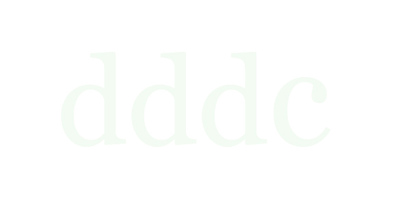
Due Diligence Development Circuit is a network comprised of five partner organisations in the Nordic & Batlic countries: Ptarmigan (Tallinn, Estonia), Ptarmigan (Helsinki, Finland), Small Projects (Tromsø, Norway), Mount Analogue (Stockholm, Sweden) and Weld (Stockholm, Sweden). The network is funded in 2012 by Nordic Culture Point. All of the partners are non-profit, artist-run platforms, and view the operation of their events as an artistic project in itself.
The starting point of Due Diligence Development Circuit (dddc) is to explore three content areas:
1. Experimental arts collaboration. Programmes in this field will be open-form group activities that explore performance, visual art, sound, and other forms. The emphasis is on collaboration, not the production of objects or media.
2. Maker culture. Programmes in this field will take a hands-on approach, where participants will take on production strategies through the “DIY” model. This could be anything ranging from homebuilt electronics, musical instruments, or software engineering.
3. Sustainable lifestyles. Programmes in this field will investigate the rhythms of life in the contemporary Nordic and Baltic countries, looking at sustainability awareness, behavioural alternatives, and critiques of society.
In 2012 we will invite selected artists to work with us as we develop the dddc network.
A performance idea, which will occur when desired in response to a particular space, an exhibition or situation. Durational Relational is about verbal and non-verbal conversation between the artists, the site, the artwork/s and the audience.
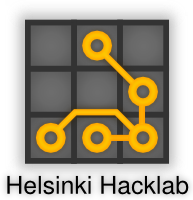
We are founding the first open Hackerspace (*) in the capital region of Finland. (* or "Makerspace", "FabLab", or whatever you want to call it!)
We are now recruiting more members who are willing to pay 15-25€/month, or whatever it takes to rent a reasonable work space in Helsinki. The more members we get, the cheaper it will be for each!
We are, among other DIY-projects, interested about applying electronics to various ideas, not just traditional hardware hacker stuff, but also in artistic and other sectors, like 3D-printing and so on. But of course it depends on our coming members, which kind of direction Helsinki Hacklab will eventually take.

Currently we are not actively offering residencies in Helsinki as our focus is increasingly about developing projects that are initiated by the members of Ptarmigan association.
However residencies have been one interesting part of our relatively short existence. Between 2009-2011 we were host to a variety of residencies for artists and other creative producers. These were sometimes been Helsinki-based people working in our old Nilsiänkatu space, or international visitors with longer-term projects. Since 2011 Ptarmigan Helsinki has not been bound to a physical space and our funded Nordic-Baltic residency programme has finished, so our residency programme is on a bit of a hiatus.
We are always open to interesting ideas and projects. Whilst we cannot offer funds, studio space, or accomodation, we are still eager to work with visiting projects in whatever capacity we can. This may merely be through networking or organising talks and presentations, but it's something we can do at this moment.
Instead of thinking that we are a residency centre without a centre, we see our community as the centre. As always, we're most interested in proposals that don't fit inside the typical confines of art production. With our focus on participatory projects, we are most excited by work that engages with the public and creates events and unusual interactions. We love formats such as workshops, discussions, and bizarre approaches to educational formats -- and we always like to see residents who become involved with our ongoing projects. And now, with our second location in Tallinn, we're excited to see projects that would have some presence in both countries.
If you are visiting Helsinki and are interested to present an artist talk or performance please or if you are planning a project anyway that you'd like to collaborate with us on - please tell use about your ideas through our project proposal form. Give us a sense of what you're looking for from us, and why you think Ptarmigan is a good platform for your work. Whilst we can't promise anything, but we would still love to hear from you.
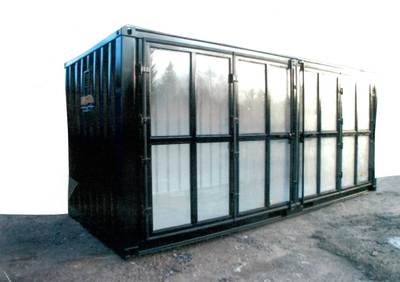
A two-week takeover of a shipping container in Lasipalatsinaukio, Helsinki, from the 29th of May until the 10th of June 2012. Kontaining is produced by Ptarmigan ry in association with the Arts Council of Uusimaa.

Labyrinths and Rings is an ongoing series at Ptarmigan that features artists, musicians, filmmakers, cultural producers, or any other creative practitioner presenting their work to our audience. The guests will make short presentations of their work and practice, which is followed by a moderated question and answer session/discussion.
All L&R events will feature either a DJ or live background music, and food will be served according to a different theme for each night.
If you are passing through Helsinki and would be interested in presenting your work at a Labyrinths and Rings, please contact us and propose your ideas.
Ptarmigan is an event-driven project space. Since we began in July 2009, we have organised 269 events in Tallinn and 191 in Helsinki. Below is our entire history of events, and you may also search our site.
November 2013
October 2013
September 2013
June 2013
March 2013
November 2012
September 2012
August 2012
July 2012
June 2012
May 2012
April 2012
March 2012
February 2012
January 2012
December 2011
November 2011
October 2011
September 2011
August 2011
July 2011
June 2011
May 2011
April 2011
December 2010
November 2010
October 2010
September 2010
August 2010
July 2010
June 2010
May 2010
April 2010
March 2010
February 2010
January 2010
December 2009
November 2009
October 2009
September 2009
July 2009